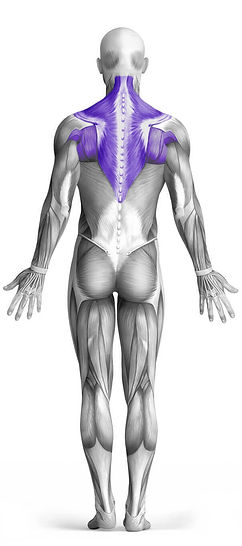Lever Narrow Grip Seated Row 101 Video Tutorial
0

Exercise Synopsis
Target Muscle Group
Upper Back
Secondary Targets
Execution
Compound
Force Type
Pull
Required Equipment
Leverage Machine
Fitness Level
Intermediate
Variations
Alternatives
None
Timer
Hour
Minute
Second
Stopwatch
00:00:00:00
Overview
The Lever Narrow Grip Seated Row is an effective exercise that primarily targets the upper back, including the lats and traps, while also engaging the biceps as secondary muscles. Performed on a leverage machine, this exercise involves a pulling motion where you grip the handles with a narrow stance, focusing on retracting the scapula and driving the elbows backward. By isolating the upper back, the exercise helps improve posture and overall back strength. The controlled movement allows for a safe and efficient workout, making it ideal for building muscle and enhancing pulling strength.
How to Perform
Set Up: Sit on the machine with your chest resting against the pad for support. Ensure your feet are firmly placed on the floor for stability. Grab the lever handles with an underhand grip, keeping your hands shoulder-width apart.
Initial Position: Sit up straight, maintaining good posture. Begin with your arms fully extended, and shoulders relaxed, while keeping a slight bend in your elbows.
Execution (Pulling): Engage your core and pull the handles towards your torso. Focus on squeezing your shoulder blades together as you drive your elbows back, ensuring they pass behind your body. Keep your chest lifted and shoulders pulled back as you perform the movement.
Return: Slowly reverse the movement, extending your arms forward and allowing your shoulders to stretch out as you return to the starting position. Maintain control of the movement throughout.
Repetition: Perform the desired number of repetitions, focusing on smooth, controlled motion to fully engage the upper back and biceps while avoiding excessive momentum.
★ Bonus: For exercises that involve external weights (such as dumbbells, barbells, or machines), the One Rep Max (1RM) calculator can help you estimate your maximum lifting capacity. Use it to track your strength progress and adjust your training for optimal results.
Tips
Sit with your chest against the pad and feet flat on the floor for stability.
Grip the lever handles with an underhand grip, hands shoulder-width apart.
Keep your back straight and core engaged throughout the exercise.
Pull the handles towards your torso, driving your elbows back and squeezing your shoulder blades.
Ensure the elbows pass behind your body to fully engage the upper back muscles.
Focus on keeping your shoulders pulled back and chest lifted during the pulling motion.
Slowly return the handles to the starting position, allowing your arms to fully extend.
Avoid using momentum or jerking movements to maintain control and maximize effectiveness.
Keep a steady pace, performing each rep with proper form for better results.
Perform the exercise with a controlled range of motion to reduce the risk of injury.
How Not to Perform
Avoid Using Momentum: Do not jerk or swing your body to pull the handles. Relying on momentum can lead to improper muscle engagement and increase the risk of injury. Focus on a controlled, smooth motion.
Don’t Round Your Back: Maintain a neutral spine throughout the movement. Rounding your back can strain your lower back and shift focus away from the upper back muscles.
Don’t Overextend Your Arms: Avoid extending your arms too far forward. Fully extending can reduce the tension on the target muscles, making the exercise less effective.
Don’t Shrug Your Shoulders: Keep your shoulders down and avoid letting them rise toward your ears. Shrugging can shift the focus to your traps rather than the upper back.
Don’t Overuse the Biceps: While the biceps are a secondary muscle, don't let them dominate the movement. Focus on squeezing your shoulder blades together to ensure the upper back muscles are doing most of the work.
Avoid Flaring Elbows Too Wide: Keep your elbows close to your body as you pull. Flaring them outward can engage the shoulders too much and reduce the effectiveness on the upper back.
Don’t Rush Through the Reps: Perform each rep with control. Rushing through the movement can reduce muscle engagement and waste energy.
Don’t Let Your Chest Collapse: Keep your chest lifted and avoid leaning too far forward during the exercise. This helps maintain proper posture and engages the target muscles more effectively.
Avoid Locked Elbows at the Start: Don’t lock your elbows at the beginning of the movement. A slight bend in the elbows ensures continuous tension on the muscles and reduces the risk of hyperextension.
Don’t Neglect Breathing: Ensure you’re breathing steadily throughout the exercise. Holding your breath can create unnecessary tension in the body, limiting your performance and focus on the target muscles.
Variations
Variations of fitness exercises refer to different ways of performing a specific exercise or movement to target various muscle groups, intensities, or goals. These variations aim to challenge the body differently, prevent plateaus, and cater to individuals with varying fitness levels.
Alternatives
Alternative exercises in fitness refer to different movements or activities that target similar muscle groups or serve the same training purpose as the primary exercise. These alternative exercises can be used as substitutes when the original exercise is unavailable or challenging to perform due to various reasons such as equipment limitations, injuries, or personal preferences.








